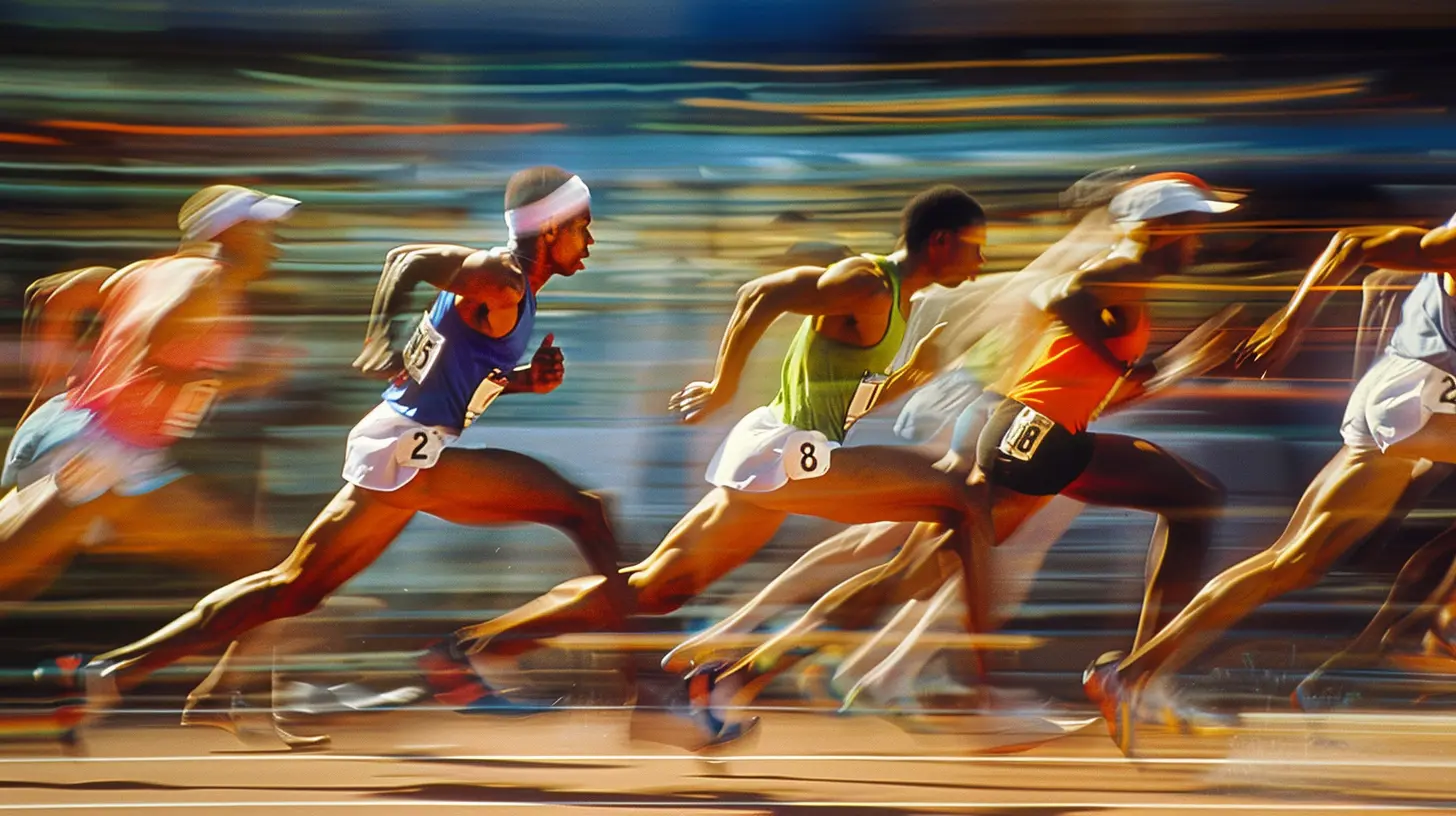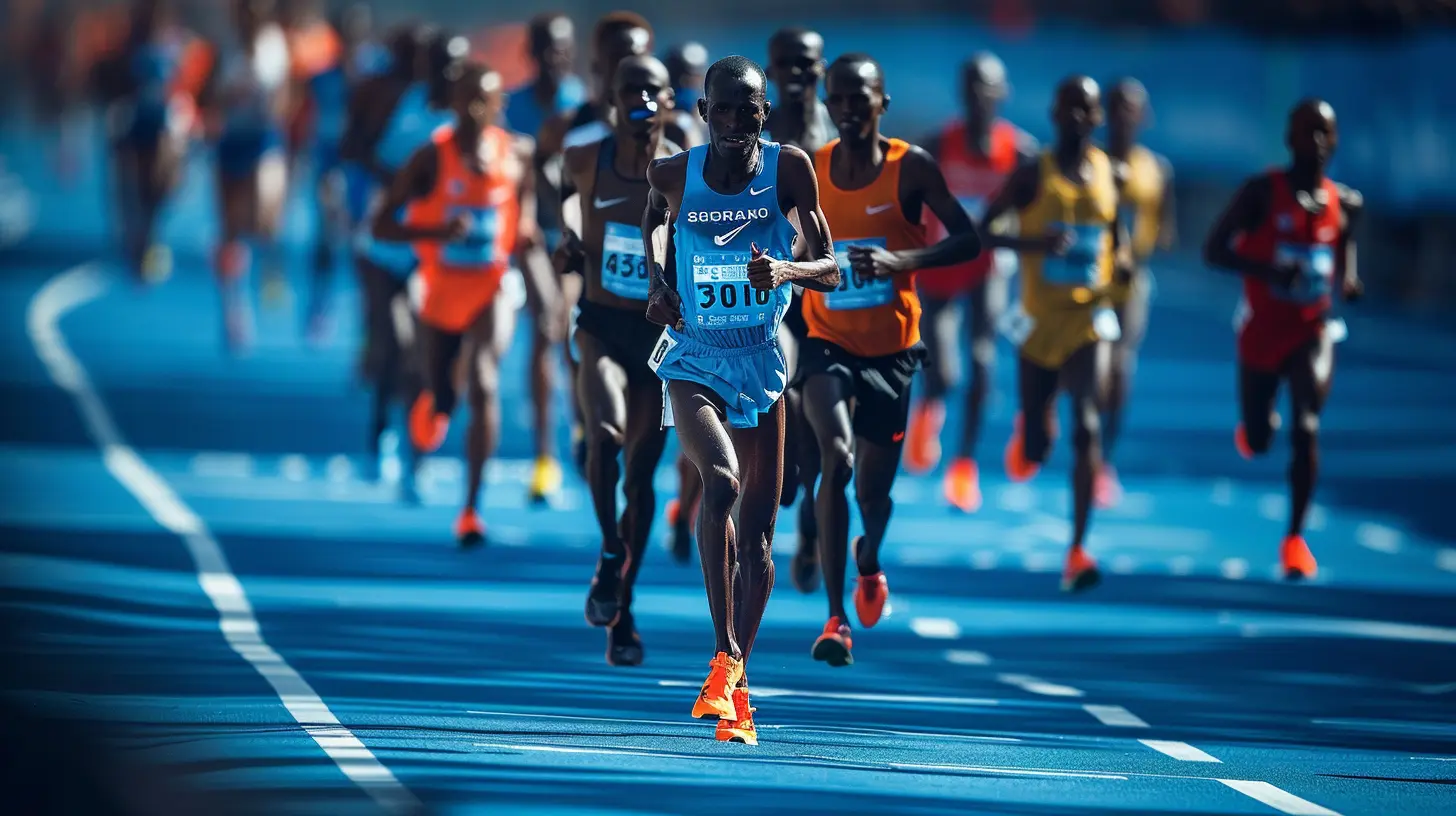How to Master the Art of Pacing Yourself During a Race
29 August 2025
You’ve trained for weeks—maybe even months. The big race day arrives, your heart is pounding, and you’re full of adrenaline. You cross the start line full of energy, legs flying, lungs open wide... and then halfway through, it hits you like a brick wall. Exhaustion. Burnout. The dreaded fade. Sound familiar?
Yeah, we’ve all been there.
You might wonder, “How do those elite runners make it look so easy? How do they know just how fast to run and when?” That magic sauce, my friend, is called pacing, and it’s more than just running slower at first. It’s a fine-tuned skill, a mental game, a strategy honed over time. But the good news? Anyone can learn it—including you.
So let’s break it down, heart-to-heart, and figure out how to master the art of pacing yourself during a race.
What Is Pacing and Why It Matters
Before we get into the nitty-gritty, let’s start with the basics.Pacing is simply how fast you run over a set distance. Sounds simple, right? Well... not exactly. The art lies in finding the perfect balance between effort and endurance, so you cross the finish line strong—not crawling, not gasping, but still with fuel left in the tank.
Imagine you’ve got a car with one tank of gas. If you floor it right out of the driveway, you’re probably not going to make it to your destination. But if you drive smart, ease off the gas when you need to, and press the pedal when the road opens up—now you’re getting somewhere.
That’s pacing.
The Psychology of Pacing: It’s Not Just About the Legs
Let’s get real for a second—pacing isn’t just physical. It’s deeply mental and emotional.You see, races bring out all sorts of emotions. Excitement, nervousness, pressure—especially if there’s a crowd or you’re chasing a personal record. That mental buzz can trick you into going way too fast early on.
And that’s the trap.
You have to run with your head as much as your heart. You’ve got to quiet that overly eager inner voice that says, “Go out hard and hold on!” and instead replace it with a calm strategy: “Stick to the plan. Trust your training. Build into it.”
Pacing is restraint, discipline, and trust, all rolled into one.
Know Thyself: Why Self-Awareness Is Key
You can’t pace well if you don’t know your own limits—and I don’t just mean your max sprint speed. I’m talking about your sustainable effort—the pace you can hold without red-lining.Here’s a great tip: Train with a heart rate monitor or pace-tracking app. These tools help you understand what different efforts feel like. Over time, you'll start to recognize your “easy”, “threshold”, and “race pace” efforts by feel alone.
And that’s the sweet spot: When your body becomes your best pacer.
Start Slow to Run Fast: Why Negative Splits Work
There’s a saying among experienced runners: “Start slow to finish strong.”The best races—those where you feel powerful and in control—often come down to negative splits. That means running the second half of your race faster than the first.
Why does it work? Because your body warms up into its rhythm, your engine finds its groove, and your mind settles into the challenge. You pass people in the final stretch instead of being passed—and there’s no better feeling than that.
So yes, even if you feel like a racehorse at the gate, ease up in the first third of your race. That restraint pays off big time later on.
Fuel and Hydration: The Unsung Pacing Tools
You might not think of hydration as part of pacing, but let me tell you—it plays a major role.If you under-fuel or neglect hydration, you’ll run into what athletes call “bonking” or “hitting the wall.” Basically, your body shuts down all that lovely energy you worked so hard to build up.
Instead, plan your nutrition like it’s part of your pacing strategy.
- Take small sips of water or electrolyte sports drinks during longer races.
- For half-marathons or longer, consider energy gels or chews every 30-45 minutes.
- Don’t try anything new on race day! Always test your fueling plan during training runs.
Remember: a fueled engine is a strong engine.
Race Day Strategy: The Mile-by-Mile Breakdown
Ready to put it all together? Let’s walk through how to pace a race from start to finish.1. The Start (Miles 1–3)
You’re hyped, the crowd’s roaring… but this is the danger zone for overpacing. Be patient. Let others sprint ahead. Stick to your target pace or even a few seconds slower per mile.Keep your breathing calm, your stride smooth, and remind yourself: it’s a marathon (or 10K, or 5K), not a sprint.
2. The Settle-In Phase (Middle Miles)
Now’s the time to find your rhythm. Your body should be warm, your breathing under control, and your pace steady.This is where all that training pays off—when your legs go into autopilot. If you feel strong, don’t speed up just yet. Hold steady. Let your momentum build.
3. The Final Push (Last Quarter)
Here’s where you cash in your patience. When you hit those final miles, it’s go time. Increase your effort—not recklessly, but consciously.Start targeting runners ahead of you to pass. Focus on your form. Use positive self-talk. You’ve set yourself up for a strong finish—now go make it happen.
Training Tips to Improve Your Pacing Skill
Let’s not leave it all for race day. You can—and should—practice pacing during training. Here's how:- Tempo Runs – These teach you to hold a “comfortably hard” pace. Great for simulating race effort.
- Progression Runs – Start easy, then gradually increase pace. Mimics running negative splits.
- Run with a Pace Watch or App – Track your pace to get real-time feedback.
- Effort-Based Runs – Ditch the watch sometimes. Train your instincts to know how different paces feel.
- Race Simulations – Try running 80–90% of your race distance at goal pace during training.
The more you practice, the more second-nature pacing becomes.
Listen to Your Body: When and How to Adjust
What happens if things don’t go to plan?Maybe it’s hotter than expected. Maybe you're feeling off. Maybe the course is hillier than you thought.
Hey, it happens. That’s where pacing becomes dynamic. It’s not rigid. It’s responsive.
If your breathing’s too heavy for the effort you’re giving, dial back. If you’re feeling super strong earlier than expected, be cautious—don't surge too soon. Adapt to the signals your body sends, and always err on the side of running smart.
You’re not a robot—you’re human. And smart runners make adjustments.
Don't Compare, Just Compete With Yourself
Here’s a truth bomb: Your perfect pace is not someone else’s. It’s easy to get pulled into comparisons—especially if you’re running with friends or chasing others in a crowd.But pacing is personal. It's your race, your body, your goal.
So ditch the ego. Focus on your lane, your watch, your breath. In the end, beating your own expectations feels way better than trying to outdo someone else.
The Final Kick: Trust the Process
Mastering the art of pacing doesn’t happen overnight. It comes with experience, trial and error, great races and not-so-great ones.But every step you take, every mile you run with intention, brings you closer to that sweet spot—that runner’s flow where everything just clicks.
So next time you toe the line, remember this: The real race isn’t against the clock or the crowd. It’s about knowing yourself, honoring your effort, and crossing that finish line with pride and power.
You’ve got this.
Final Thoughts
At the core of it, pacing is about respecting the distance and honoring your own rhythm. It’s part science, part art, and entirely a reflection of your dedication and self-awareness as an athlete.So whether you're going for a personal best or simply finishing strong, learning how to pace yourself transforms not just the race—but the runner you become in the process.
Now lace up, breathe deep, and run smart. Your best race is waiting.
all images in this post were generated using AI tools
Category:
RunningAuthor:

Frankie Bailey
Discussion
rate this article
1 comments
Pearl Luna
Pacing is the key to unlocking your true potential! Trust your training, listen to your body, and embrace the journey. Every step counts, and mastering your pace will lead to incredible achievements. Keep pushing forward!
September 27, 2025 at 12:53 PM

Frankie Bailey
Absolutely! Mastering your pace is crucial for maximizing performance and enjoying the race. Trusting your training and tuning into your body are essential for achieving your goals. Keep going!


